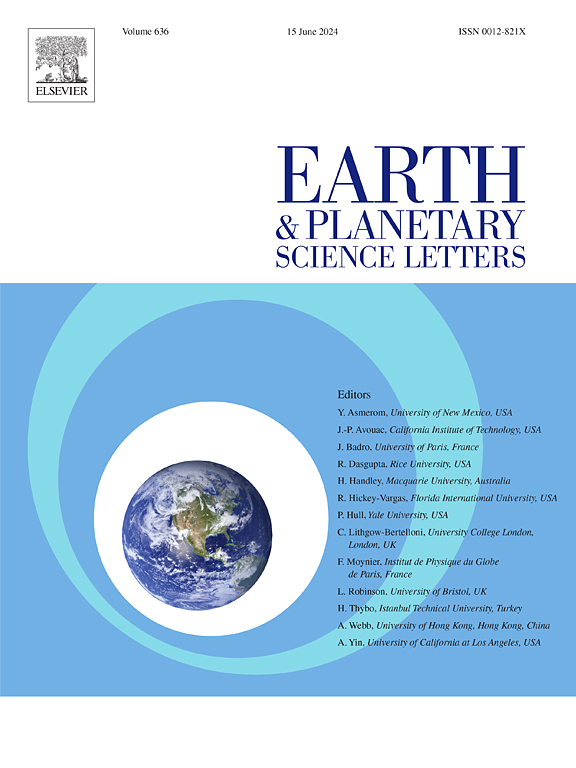Shear-induced dilation and dike formation during mush deformation
IF 4.8
1区 地球科学
Q1 GEOCHEMISTRY & GEOPHYSICS
引用次数: 0
Abstract
We present the results of high-temperature (900 °C), high-pressure (200 MPa) deformation experiments that identify the processes and deformation conditions leading to melt migration in crystal-rich mushes. This study is relevant to transport of magmas in transcrustal magma reservoirs. Experimental samples comprise juxtaposed pieces of soda-lime glass and densified mixtures of borosilicate glass and quartz sand, which, at elevated temperatures and pressures, have melt and shear viscosities similar to natural silicate melts and crystal-rich mushes. The synthetic mushes have crystal fractions of 0.60 to 0.83. Samples were deformed in torsion at shear strain rates of 10–5 to 10–4 s-1 to shear strains up to 2.7. Image analysis of experimental samples shows melt migrates into the mush during shear. In mushes with crystal fractions ≥ 0.75 shearing causes melt-filled mm-scale dikes to form and propagate into the mush. To our knowledge, these features are the first dikes formed in high-temperature, high-pressure deformation experiments. Dike formation results from shear-induced dilation, which causes the mush to become underpressurized relative to the melt, at an estimated pressure differential of 10 MPa. Experimental conditions indicate shear-induced dilation and diking occur while the mush is still viscous (i.e., Weissenberg number < 10–2). We apply our results to Soufrière Hills Volcano (Montserrat, West Indies) and use our analysis to predict the deformation conditions that would lead to diking and rapid, voluminous melt migration in that active volcanic system.
求助全文
约1分钟内获得全文
求助全文
来源期刊

Earth and Planetary Science Letters
地学-地球化学与地球物理
CiteScore
10.30
自引率
5.70%
发文量
475
审稿时长
2.8 months
期刊介绍:
Earth and Planetary Science Letters (EPSL) is a leading journal for researchers across the entire Earth and planetary sciences community. It publishes concise, exciting, high-impact articles ("Letters") of broad interest. Its focus is on physical and chemical processes, the evolution and general properties of the Earth and planets - from their deep interiors to their atmospheres. EPSL also includes a Frontiers section, featuring invited high-profile synthesis articles by leading experts on timely topics to bring cutting-edge research to the wider community.
 求助内容:
求助内容: 应助结果提醒方式:
应助结果提醒方式:


